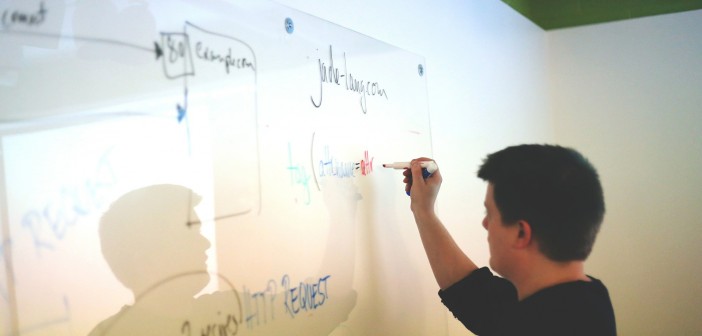Finding a good business idea is exciting. To take advantage of your idea, you may want to jump right in and start doing business. It’s critically important, however, to think through your business concept by creating a business plan. Your plan can validate your idea and can reveal potential problems. If you need to know how to start a business, use these tips to set yourself up for success.
An Example
Riverside is a sporting goods company that is considering a move into the hiking gear market. Specifically, the firm sees potential customer demand for hiking jackets, shorts and pants for men. To start their business, Riverside needs to answer 4 basic questions:
- Does the product solve a problem for the customer?
- Is the problem urgent enough for the customer to search for a solution?
- How much is the customer willing to pay for a solution?
- How many customers will pay that sale price?
It’s hugely important for you to answer these questions for yourself. If you need to know how to start a business, this is your starting point. If you can’t reasonably answer these questions, you can’t proceed in your business planning. You may need to find another business idea.
Your Market Analysis
Ken Boyd -Case Study One
Click here to get the example template!The top of this spreadsheet explains Riverside’s market analysis. Their research indicates that 20 million serious hikers in the US spend, on average, $80 a year on hiking gear. Riverside believes that the firm can capture 1% of the $1.6 billion annual market. That translates into $16,000,000 in annual sales.
Riverside’s marketing plan outlines how they will get attention and generate interest to capture that 1% of the market. Their business plan will have an entire section explaining how they will market hiking gear.
Let’s relate the marketing plan to the some of the question listed above:
- Riverside’s market research indicates that serious male hikers are not satisfied with the quality of the hiking gear they buy. Some of it is not as waterproof as advertised, for example. Other product lines don’t hold up under heavy use. So, these hikers have a problem.
- A certain percentage of the serious hikers are very frustrated with their gear. They’ve been on hikes or mountain climbing when the hiking gear tears, or a zipper breaks. These people are willing to pay for a solution.
Product Pricing and Sales
With those two questions answered, you can move onto the specific products you’ll sell. In this case, Riverside finds a market for a jacket, a style of shorts and a particular design for pants.
Once you determine the products your customers want, you need to price them. This gets at the 3rd question listed above: What price are customers willing to pay for your product?
Riverside considers the sale price of competing products. The firm also considers if their marketing efforts can convince hikers that the clothing is different and better than their competitors. This is the process of branding. When hikers see Riverside clothing, they should immediately think of the gear’s higher quality and durability.
Pricing, then Costing
Pricing pricing is a difficult area for people who need to know how to start a business.
One method to price your product is to set a sale price first. Next, compute the total cost to produce one unit of that product. Subtract the total cost from the sale price to compute your profit. If the profit margin is reasonable, then you can “live with” the sale price you’ve set.
The spreadsheet lays out pricing for all three products. Let’s use the jacket as an example. Market research indicates that the jacket should be priced at $120. Riverside adds up the total cost and computes a $90 cost per unit. The profit is ($120 – $90), or $30.
How much profit? Profit Margin
Now, your dollar amount of profit is not the most important profit measure. Instead, consider your profit margin. Profit margin computes your profit as a percentage of sales. Said another way: For every dollar of sales, how much profit do you make? That’s profit margin.
Here’s an example that explains why profit margin is a better indicator of profit: Assume that you manage a hardware store. You sell a $10 hammer and make a $1 profit. Your profit margin is ($1 / $10), or 10%. You also sell a $300 lawnmower and make $15. The lawnmower’s profit margin is ($15 / $300), or 5%.
You’re better off selling more hammers and fewer lawnmowers. While the lawnmower profit is more in dollars, it’s less profitable when compared with the sale price.
Riverside’s profit on the jackets is ($30 profit) / ($120 sale price), or 25%. The spreadsheet lists sale price, cost, profit and profit margin for all three products.
Annual Revenue
Riverside takes the three products and calculates the number of units sold for each. Sales are combined for the three products to reach the $16 million annual sales number.
Now, those annual sales numbers should get your attention. Think about the amount of equipment, the number of people, and the technology investment you’ll need. It may be a huge task to deliver that many units of Riverside’s product of service. The same issue may be true in your business.
Cost Analysis
For this discussion, the final section is computing your costs. If you make a product, you’ll have direct material, direct labor and overhead costs. Riverside needs to buy cotton and leather material, for example. The company also pays labor costs to run the machinery.
It’s critical for you to assign all of your costs to the product or service that you sell. This is the only way to judge your company’s true profit. Labor and material costs are pretty straightforward. Each unit you produce requires a certain amount of material and a number of minutes of machine time. (You can use the machine time to assign labor costs).
Overhead Costs
What’s less apparent is how to assign overhead costs. Overhead costs cannot be directly traced to a product. Instead, these costs are allocated, based on some sort of activity level.
You’ll see in the spreadsheet that $2 in overhead cost is assigned to each unit. These are costs for factory rent and utility costs. These costs might be assigned by dividing the total monthly cost by the number of units produced in that month.
Riverside now has the detail to explain the components of each product’s cost.
Financial Starting Point
Riverside has a starting point for their business. If the owners decide that these assumptions are reasonable, they can continue adding to the business plan. Among other things, Riverside will detail their marketing plans and how they will obtain funds to start the business.
Use this example and compare it to your own business idea. If you can take your plan to this level of detail, you have a good starting point.




